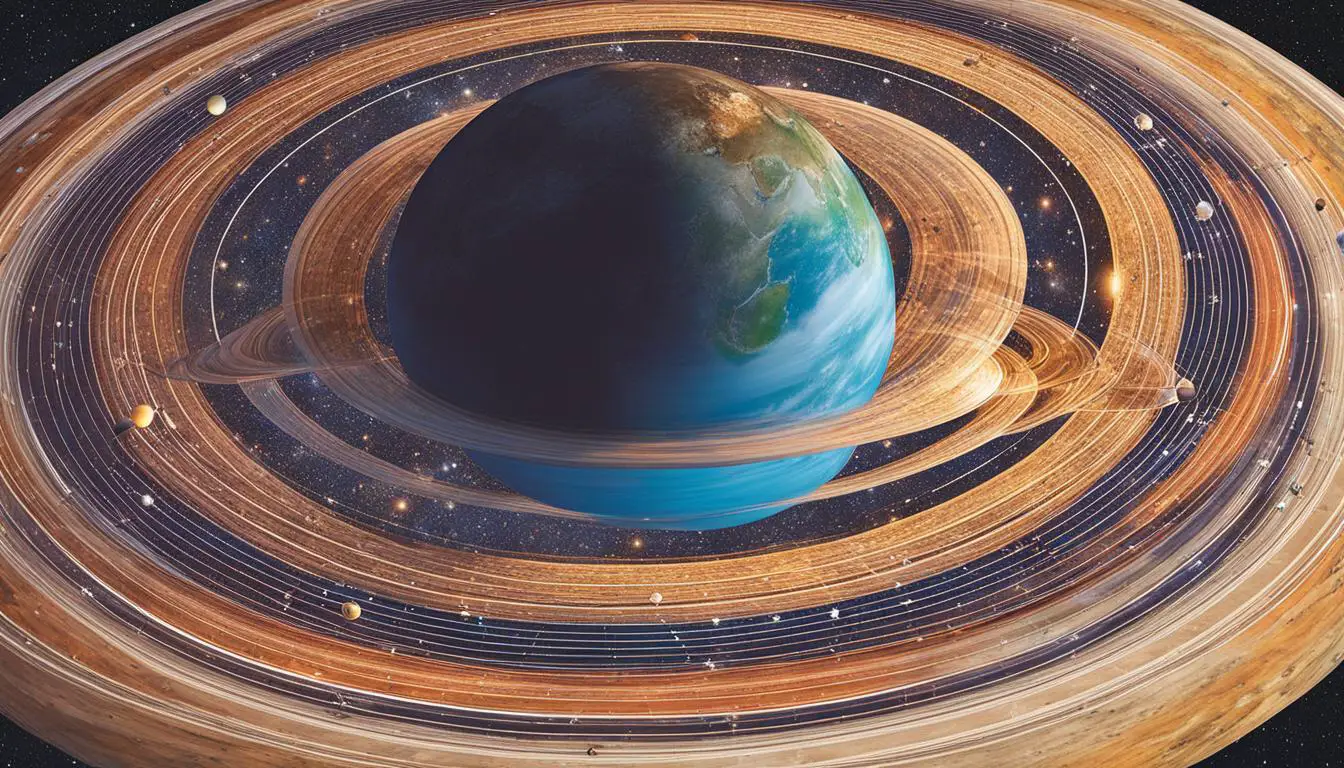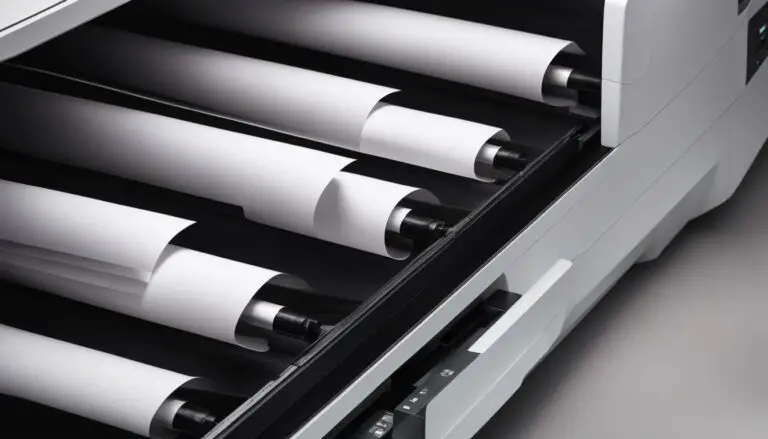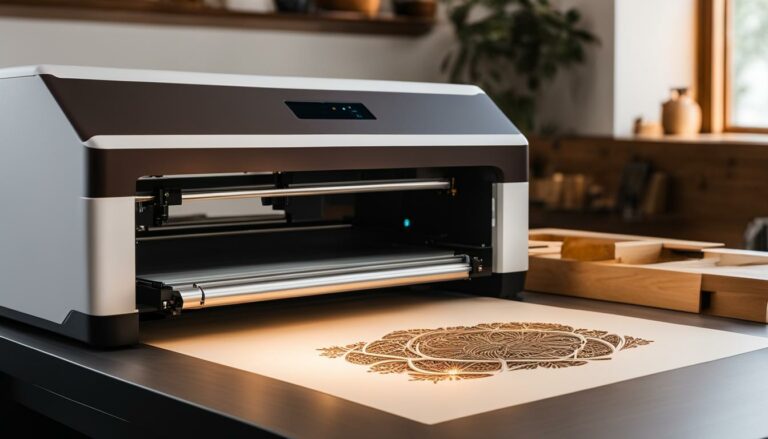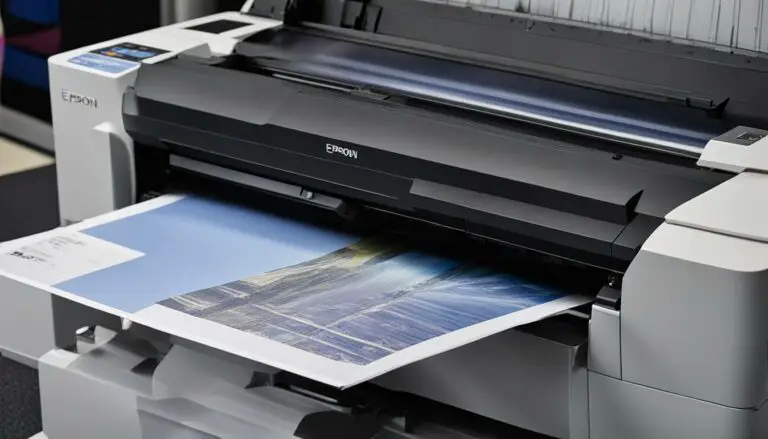How To Master 3D Solar System Model In Easy Steps
Originally posted on December 12, 2023 @ 10:57 am
This article will demonstrate how to make a mesmerizing 3D model of the solar system that is ideal for children and those curious about discovering the marvels of our galaxy.
Creating a 3D solar system model is a fun and educational project that allows you to delve into the fascinating world of space. By following our step-by-step guide, you will master the art of constructing a realistic and visually appealing representation of our solar system.
Key Takeaways:
- Learn how to create a 3D solar system model using simple materials.
- Choose the right colors to accurately depict each planet in your model.
- Ensure accurate scale representation for a realistic simulation of the solar system.
- Use visual aids and references to guide your color and scale choices.
- Engage in an educational and hands-on project that sparks curiosity and learning.
Materials Needed for the DIY Solar System Model
To create an interactive and educational solar system project, you will need the following materials:
- A cardboard box
- Polystyrene balls in different sizes:
- One large ball for the sun
- Two medium balls for Jupiter and Saturn
- Two small balls for Uranus and Neptune
- Acrylic paint in various colors
- Black construction paper
- Gold construction paper
- Clear beading thread
- A hot glue gun
- Skewer sticks (optional)
- Polymer clay
- A large needle
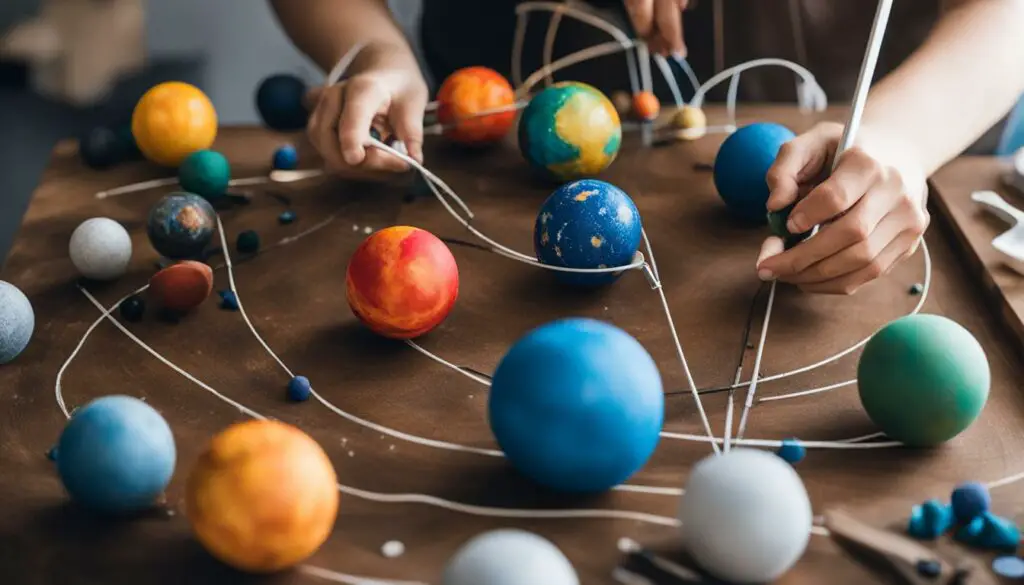
This wide range of materials will allow you to create a visually engaging and interactive solar system model. The polystyrene balls will serve as the planets, while the acrylic paint and construction paper will help you bring them to life with vibrant colors and textures. The clear beading thread is essential for suspending the planets in the cardboard box, giving them the appearance of floating in space. The hot glue gun, skewer sticks, polymer clay, and large needle are optional materials that can be used to add additional details and enhance the overall realism of your solar system project.
With these materials at your disposal, you are ready to embark on an exciting DIY solar system model project that will inspire and educate others about the wonders of our solar system.
Step-by-Step Guide to Creating Your 3D Solar System Model
Creating a 3D solar system model can be an exciting and educational experience. Follow these step-by-step instructions to bring your solar system simulation to life:
Gather the materials:
To start, gather all the materials you’ll need for your 3D solar system model:
- Cardboard box
- Polystyrene balls in different sizes
- Acrylic paint in various colors
- Clear beading thread
- Black construction paper
- Gold construction paper
- Hot glue gun
- Skewer sticks (optional)
- Polymer clay
- Large needle
Having these materials ready will ensure a smooth and efficient process.
Prepare the box:
Start by painting the inside of the cardboard box black, creating a background for the solar system. This will enhance the overall visual effect of your 3D model.
Create the planets:
Paint each polystyrene ball to resemble a specific planet. Use reference images to match the colors of the planets accurately. Remember to include distinct characteristics such as the rings of Saturn or the reddish tone of Mars.
Assemble the model:
Thread each planet with clear beading thread, varying the length to create the illusion of different distances from the sun. Hang the threaded planets from the “ceiling” of the box using tape, ensuring they are arranged in the correct order from the sun to Pluto. Cut out a piece of black construction paper and cover the top of the box to simulate the vastness of space.
By following these steps, you can create an educational and visually impressive 3D solar system model that will captivate and inspire.
| Materials | Quantity |
|---|---|
| Cardboard box | 1 |
| Polystyrene balls | Assorted sizes |
| Acrylic paint | Various colors |
| Clear beading thread | 1 roll |
| Black construction paper | 1 sheet |
| Gold construction paper | 1 sheet |
| Hot glue gun | 1 |
| Skewer sticks (optional) | As needed |
| Polymer clay | As needed |
| Large needle | 1 |
Ensure you have all the necessary materials before starting your project to avoid interruptions and ensure a seamless creative process. Now you’re ready to embark on your journey to create a fascinating 3D solar system model!
Tips for Accurate Scale Representation in Your Solar System Model
When creating a 3D solar system model, it’s important to accurately represent the scale of the planets and their distances from the sun. This provides a realistic simulation of our actual solar system and enhances the educational value of the model. Here are some tips to help you achieve accurate scale representation:
Choosing a Unit of Measurement
To establish a scale baseline, choose a unit of measurement for both distances and sizes. A common approach is to use the Earth-Sun distance as the unit for distances and a small planet like Mercury as the unit for sizes. By using consistent units, you can maintain proportionality between the planets and convey their relative distances accurately.
Scaling Down the Distances
Since the vast distances between planets can be challenging to represent on a small scale model, you may need to scale down the distances. One option is to use logarithmic scaling, where each increment on the model represents a substantially larger distance in reality. This allows for a more manageable representation of the solar system’s immense size.
Visual Aids and Comparisons
Visual aids such as pictures, illustrations, and comparative representations can be helpful in understanding the relative sizes and distances of the planets. Use reference materials to compare the sizes of the planets to familiar objects or landmarks, which can provide a point of reference and aid in creating a more accurate scale representation.
Testing and Adjusting
Throughout the process of creating your solar system model, regularly test and adjust the scale to ensure accuracy. Use measuring tools to verify distances and compare the sizes of the planets. By fine-tuning your model, you can achieve a more faithful representation of the solar system’s scale.
By following these tips, you can create a solar system model that accurately represents the scale of our actual solar system. This will enhance the educational value of the model and provide a visually captivating simulation of space.
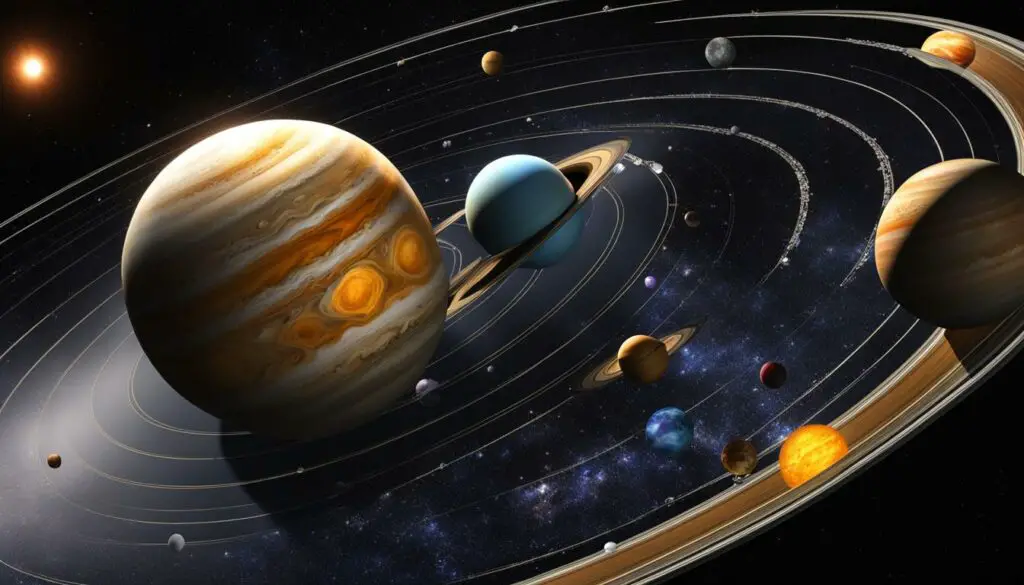
Table: Scale Representation of Planets in a 3D Solar System Model
| Planet | Size (in relation to Mercury) | Distance from Sun (in relation to Earth-Sun distance) |
|---|---|---|
| Mercury | 1x | 0.39x |
| Venus | 0.95x | 0.72x |
| Earth | 1x | 1x |
| Mars | 0.53x | 1.52x |
| Jupiter | 10.97x | 5.20x |
| Saturn | 9.14x | 9.58x |
| Uranus | 4.01x | 19.18x |
| Neptune | 3.88x | 30.07x |
Exploring the Colors of the Planets in Your Solar System Model
When creating your solar system model, it’s important to choose the right colors for each planet. For example, Mercury is grey, Venus is a pale yellow-white, Earth is blue and green, Mars is red-orange, Jupiter has bands of brown and white, Saturn is yellow with rings, Uranus is blue-green, and Neptune is dark blue. These color choices will help make your solar system model more accurate and visually appealing. Consider using pictures and references to guide your color choices and ensure a realistic representation of the planets in your model.
To add an extra level of detail to your model, you can also incorporate different shades and textures for each planet. For instance, you can use a sponge or a textured brush to create a marbled effect on Jupiter, or add glitter to represent the icy rings of Saturn. Don’t be afraid to get creative and experiment with different techniques to achieve the desired look for each planet.
Remember that the colors of the planets may vary slightly depending on the reference materials you use and personal interpretation. It’s important to strike a balance between accuracy and artistic representation. Your solar system model should be visually appealing and capture the essence of each planet while still maintaining educational value.
Table: Colors of the Planets in a Solar System Model
| Planet | Color |
|---|---|
| Mercury | Grey |
| Venus | Pale yellow-white |
| Earth | Blue and green |
| Mars | Red-orange |
| Jupiter | Bands of brown and white |
| Saturn | Yellow with rings |
| Uranus | Blue-green |
| Neptune | Dark blue |
By carefully selecting and applying the appropriate colors, you can create a visually stunning 3D solar system model that accurately represents the planets in our solar system. This will not only enhance the overall aesthetic appeal of your model but also provide an educational experience for those who view it.
Whether you’re creating a solar system model for a school project, a science fair, or simply for your own enjoyment, paying attention to the colors of the planets will elevate the realism and visual impact of your model. So go ahead, let your creativity shine, and bring the wonders of the solar system to life with an expertly colored 3D solar system model.
Conclusion
Congratulations on completing your 3D solar system model! This DIY project not only provides a fun and engaging activity, but also serves as an educational tool to learn more about our solar system. By following the step-by-step guide and incorporating accurate scale representation and color choices, you have created an impressive and realistic 3D model of the planets.
Not only is this model visually appealing, but it can also be used as a valuable educational resource. Whether you’re a parent looking for a hands-on learning experience for your children or an educator seeking to enhance lessons on space and astronomy, this 3D solar system model can truly bring the wonders of the universe to life.
Furthermore, this model can be proudly displayed as a decorative piece, showcasing your passion for space exploration and science. Whether it finds its place on a bookshelf, a classroom display, or your desk, it will serve as a constant reminder of the vastness and beauty of our solar system.
We hope you enjoyed this project and that it has sparked your curiosity and imagination. Be sure to share your creation with others and inspire them to embark on their own journey through the solar system. Happy exploring!
FAQ
What materials do I need to create a 3D solar system model?
To create a 3D solar system model, you will need a cardboard box, polystyrene balls in different sizes, acrylic paint, and clear beading thread.
How do I paint the planets in my solar system model?
Use acrylic paint in colors such as gold, orange, yellow, red, and blue to accurately represent the sun and the planets in your model.
How do I hang the planets in my solar system model?
Thread the painted polystyrene balls with clear beading thread and hang them from the “ceiling” of the box using tape or hot glue.
What colors should I use for each planet in my solar system model?
Mercury is grey, Venus is a pale yellow-white, Earth is blue and green, Mars is red-orange, Jupiter has bands of brown and white, Saturn is yellow with rings, Uranus is blue-green, and Neptune is dark blue.
How can I accurately represent the scale of the solar system in my model?
Use a consistent scale and measurement unit, such as the Earth-Sun distance, to create proportional distances between the planets in your model. Visual aids, like pictures and illustrations, can also help understand the relative sizes and distances of the planets.
What can I use the 3D solar system model for?
The 3D solar system model can be used as an educational tool for children, for visual representation and decoration, or as a hands-on learning experience about the planets and our solar system.

